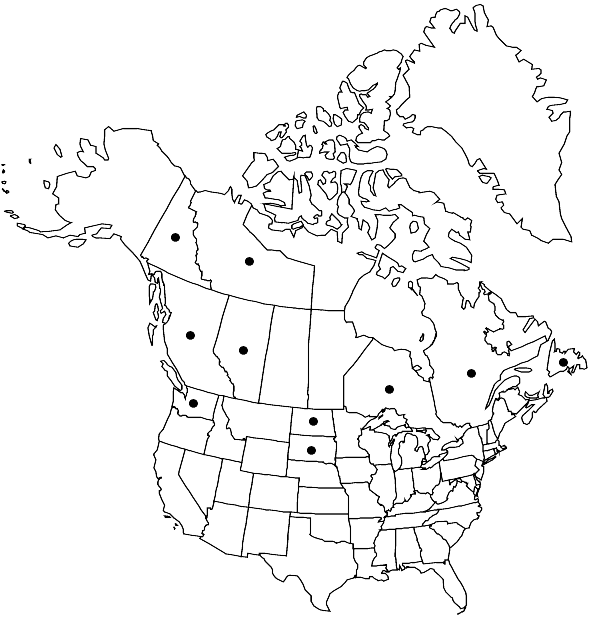Schistidium robustum
Bryophyt. Biblioth. 49: 149. 1996,.
Plants in open to compact tufts, olivaceous, sometimes brownish or yellowish. Stems 1–5 cm, central strand distinct. Leaves erect or curved when dry, narrowly ovate-lanceolate to ovate-lanceolate, sharply keeled distally, 1.6–3 mm, 1-stratose, rarely with 2-stratose striae distally; margins recurved to near apex, smooth, 1- or 2-stratose; apices acute, rarely somewhat obtuse; costa usually long-excurrent as a spinulose-denticulate, usually decurrent awn, rarely percurrent, smooth; basal marginal cells quadrate or oblate, trigonous; distal laminal cells short-rectangular, occasionally isodiametric, 8–11 µm wide, strongly sinuose. Sexual condition autoicous. Capsule light brown or red-brown, cylindric to elongate-cylindric, (0.8–)1–1.6 mm, sometimes striated; exothecial cells mostly irregularly shaped, mainly elongate, with numerous isodiametric and, sometimes, a few oblate cells, walls thin-walled to unevenly thickened and somewhat curved, usually trigonous; stomata present; peristome patent to squarrose, sometimes twisted, 300–430 µm, red or orange-red, densely papillose, entire or weakly perforated. Spores 8–11 µm, nearly smooth.
Phenology: Capsules mature late spring to early summer.
Habitat: Dry to periodically moist calcareous rock
Elevation: moderate to high elevations (400-2100 m)
Distribution

Alta., B.C., Nfld. and Labr. (Nfld.), N.W.T., Ont., Que., Yukon, N.Dak., S.Dak., Wash., Europe.
Discussion
The long, spinulose-denticulate and decurrent awns, strongly sinuose laminal cells, and brown or red-brown, cylindrical capsules with primarily elongate exothecial cells are characteristic features of Schistidium robustum.
Selected References
None.